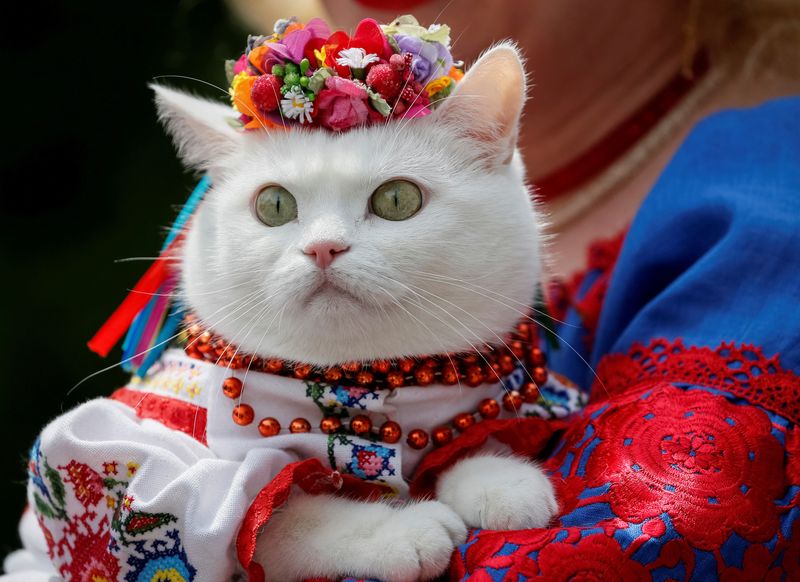Science
New Study Traces Cat Domestication to Roman Times in Europe

A groundbreaking genome study has shed light on the history of cat domestication, revealing that domestic cats first entered Europe from North Africa approximately 2,000 years ago during the early Roman Empire. This research challenges long-standing beliefs that domestication occurred much earlier, around 6,000 to 7,000 years ago.
Researchers, led by paleogeneticist Claudio Ottoni from the University of Rome Tor Vergata, published their findings in the journal Science. They analyzed genetic data from cat remains found in 97 archaeological sites across Europe and the Near East, as well as from modern domestic cats. The study examined 225 cat bones, both domestic and wild, ranging from about 10,000 years ago to the 19th century, ultimately generating 70 ancient feline genomes.
The findings indicate that the earliest domestic cat genomes in Europe date back to the first century AD. Ottoni stated, “We show that the earliest domestic cat genomes in Europe are found from the Roman imperial period onwards,” suggesting that these cats likely accompanied sailors on grain-carrying ships that traversed the Mediterranean.
Understanding Cat Domestication’s Timeline
The study refutes previous theories that suggested prehistoric domestication as farmers migrated from the Near East into Europe. Instead, it highlights the role of maritime trade in the introduction of cats to the continent. According to co-author Marco De Martino, “The introduction of the domestic cat to Europe is important because it marks a significant moment in their long-term relationship with humans.”
The research identified two separate introductions of wildcats from North Africa to Europe. The first, taking place about 2,200 years ago, involved wildcats brought to the island of Sardinia, which later became the genetic basis for the island’s current wildcat population. However, these were not domestic cats. A second wave of migration occurred approximately two centuries later, which contributed to the genetic foundation of modern domestic cats in Europe.
According to Bea De Cupere, a zooarchaeologist and study co-author at the Royal Belgian Institute of Natural Sciences, “The timing of the genetic waves of introduction from North Africa coincides with periods when trade around the Mediterranean intensified strongly.” Cats likely served as efficient hunters of mice on grain ships, while also holding symbolic and religious significance in various cultures, particularly in ancient Egypt.
Impact of Cats on European Society
Cats have been integral to human societies and economies throughout history. In ancient Egypt, they were revered as sacred animals, often associated with deities and mummified for burial. The ancient Roman army played a crucial role in dispersing domestic cats across Europe, as evidenced by feline remains found at Roman military sites.
The study identified the earliest known domestic cat in Europe, dating from between 50 BC and 80 AD in Mautern, Austria, a Roman fort along the Danube River. While the study provides significant insights into the timeline of cat introductions, it does not clarify the initial domestication process itself. Ottoni remarked, “Cat domestication is complex, and what we can tell now is the timing of the introduction of domestic cats to Europe from North Africa. We can’t really say much about what happened before and where.”
This research offers a new understanding of the complex relationship between humans and cats, illustrating how these animals transitioned from wild hunters to cherished companions in human households. As the study advances our knowledge of feline history, it highlights the importance of continued exploration into the origins of domestic animals.
-

 Lifestyle4 months ago
Lifestyle4 months agoLibraries Challenge Rising E-Book Costs Amid Growing Demand
-

 Sports4 months ago
Sports4 months agoTyreek Hill Responds to Tua Tagovailoa’s Comments on Team Dynamics
-

 Sports4 months ago
Sports4 months agoLiverpool Secures Agreement to Sign Young Striker Will Wright
-

 Lifestyle4 months ago
Lifestyle4 months agoSave Your Split Tomatoes: Expert Tips for Gardeners
-

 Lifestyle4 months ago
Lifestyle4 months agoPrincess Beatrice’s Daughter Athena Joins Siblings at London Parade
-

 World4 months ago
World4 months agoWinter Storms Lash New South Wales with Snow, Flood Risks
-

 Science3 months ago
Science3 months agoSan Francisco Hosts Unique Contest to Identify “Performative Males”
-

 Science4 months ago
Science4 months agoTrump Administration Moves to Repeal Key Climate Regulation
-

 Business4 months ago
Business4 months agoSoFi Technologies Shares Slip 2% Following Insider Stock Sale
-

 Science4 months ago
Science4 months agoNew Tool Reveals Link Between Horse Coat Condition and Parasites
-

 Sports4 months ago
Sports4 months agoElon Musk Sculpture Travels From Utah to Yosemite National Park
-

 Science4 months ago
Science4 months agoNew Study Confirms Humans Transported Stonehenge Bluestones









